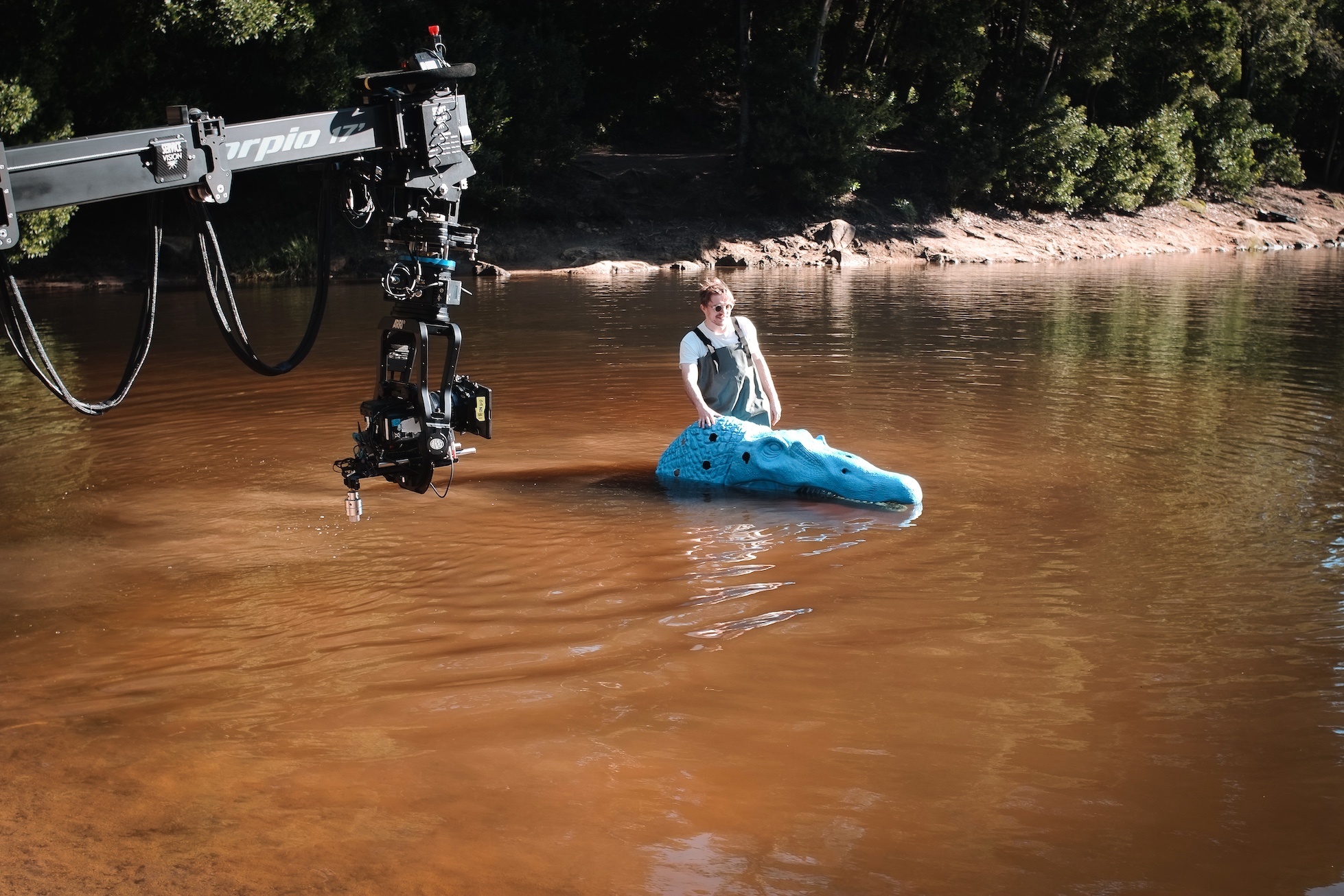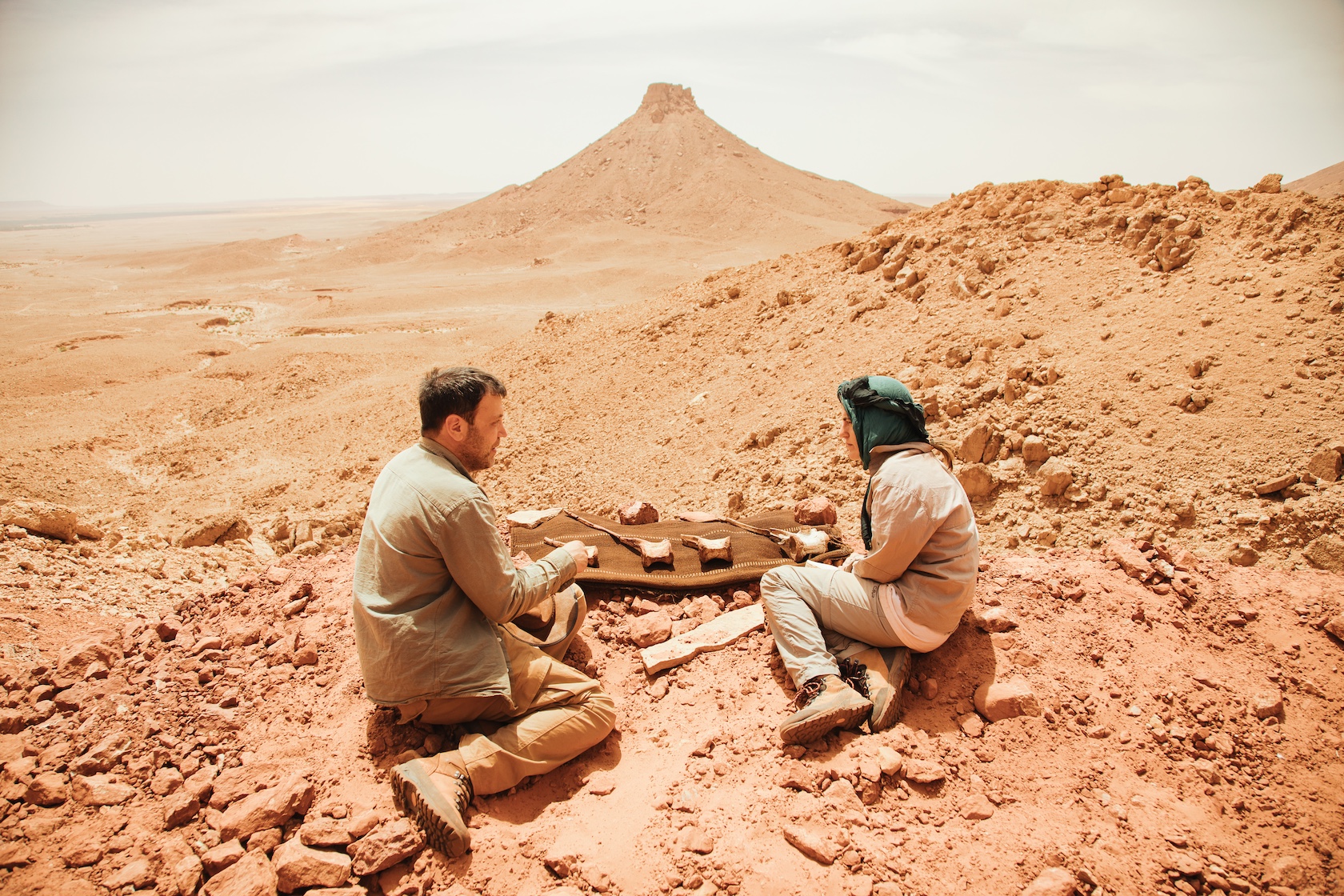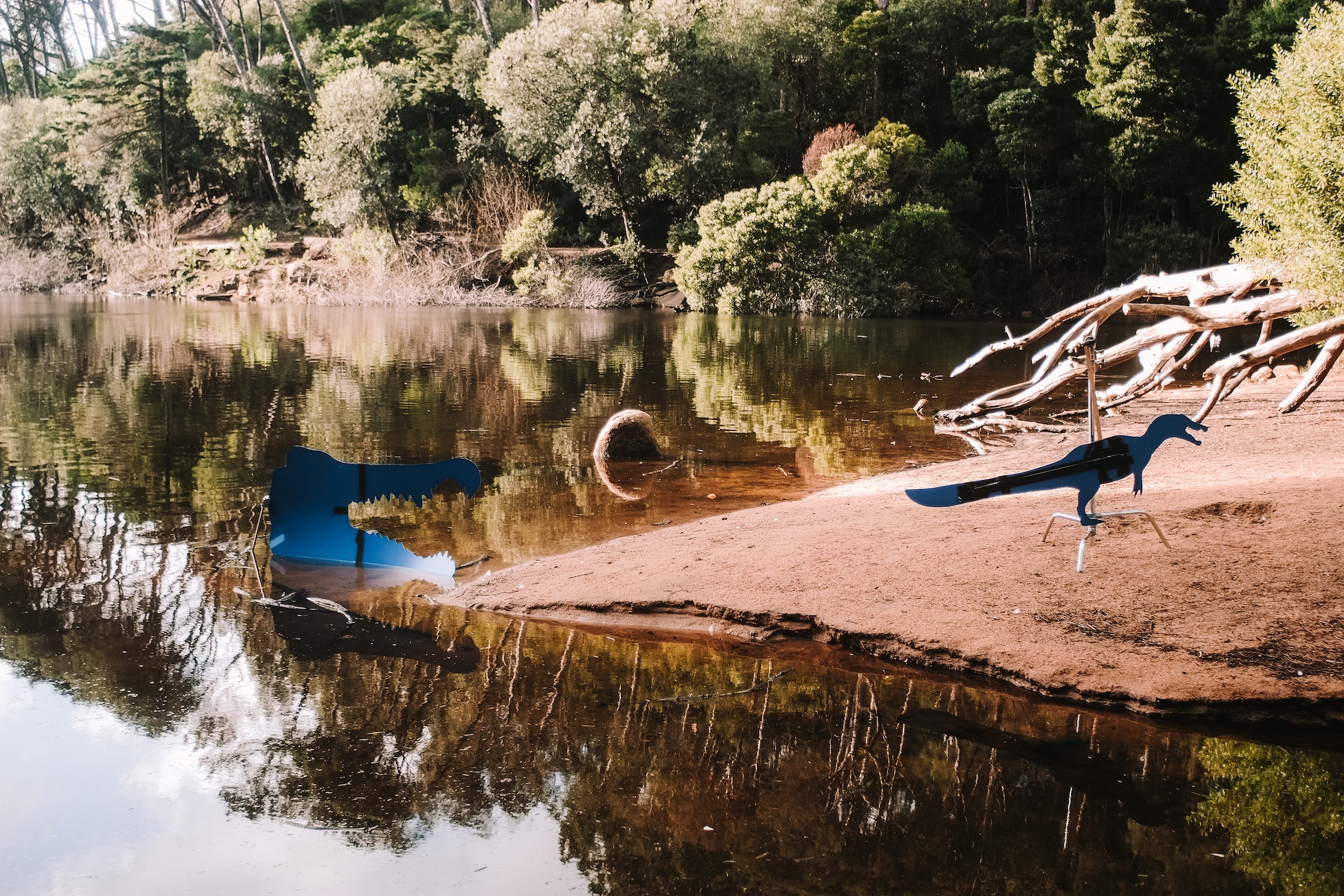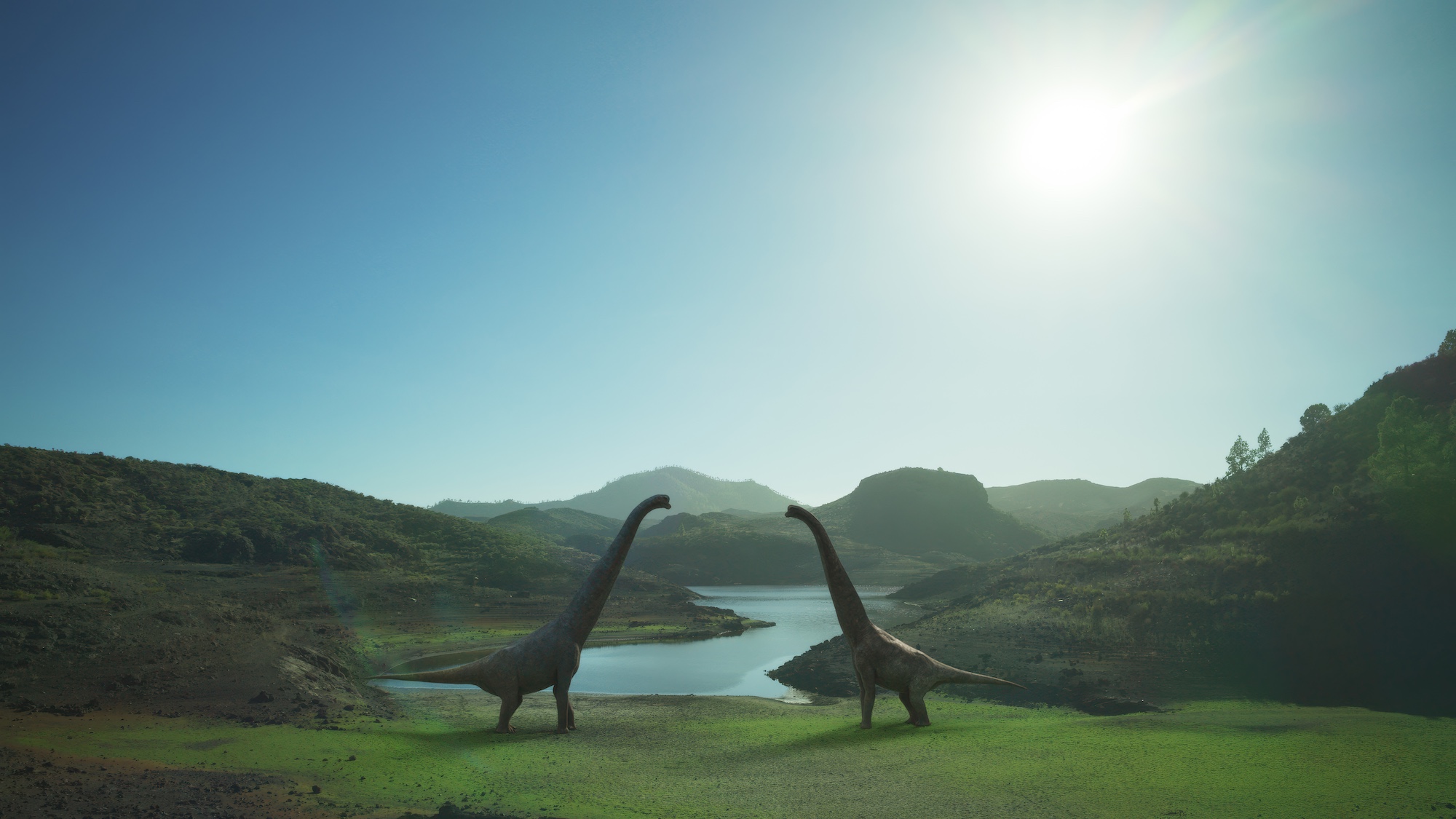Unearthing the Series: BBC’s Walking with Dinosaurs (2025)
From uncovering ancient bite marks to studying alligator muscles, discover how scientists and TV crew brought prehistoric giants back to life in BBC's new Walking with Dinosaurs series—including a water-dwelling predator bigger than the T-Rex.
Walking With Dinosaurs, one of the most iconic brands in television history since 1999, is back on BBC Earth, produced by the award-winning BBC Studios Science Unit. The series follows six incredible dinosaurs like never before featuring stories based on the latest science. By examining the bones left behind and making comparative analyses, the show reveals the secrets of how some prehistoric giants once lived, hunted, fought, and died.
The editorial team of Void Deck was privileged to interview Thomas Scott, Head of Development at BBC Studios Science Unit, and Dr. Nizar Ibrahim, a vertebrate paleontologist and comparative anatomist featured in Episode 2 of the series. Episode 2 follows the journey of a Spinosaurus named Sobek, at the edge of the Moroccan Sahara, as he takes on the role of being a new dad in search for a new home with an abundant food source for the family. Things take a turn when they face a deadly confrontation.

Still image from Walking With Dinosaurs Episode 2: A Spinosaurus father sleeps beside his youngster (VFX). Photo credits: BBC / Lola Post Production
The name Spinosaurus may not immediately ring a bell with audiences, but Spinosaurus can be even bigger than the more popular Tyrannosaurus Rex, and is unique in its traits that enable it to spend most of its time in the water. It has a sail over 2 metres tall on its back (yes, a sail!), a paddle tail, and webbed feet. These features were perfect for the rivers and swamps in ancient Morocco.
The following interview has been edited and condensed for clarity.
VD: What was it like working with the VFX and CGI team? Was there anything memorable or challenging in order to get the dinosaurs accurate?
DR. NIZAR IBRAHIM: There are lots of challenges because the creatures you're bringing back are so unlike anything alive today. It's really challenging. I mean, they look like impossible animals, you know? Even the ones we're really familiar with – the big, long necked dinosaurs – it weighs 80 tons, and it's got a head that's the size of a horse's. It's just bizarre, right? When you’re working on these animals, it’s a little bit like what you might see in some science fiction movie where they’re dissecting and doing an alien autopsy to try and figure out what that creature was like.
So describing the fossils is one thing that we, as paleontologists, are very comfortable with. But fleshing it out and having it move around raises all sorts of really complex questions.

Assistant Producer Sam Wigfield pushes Spinosaurus model through water to create realistic water ripples. Photo credits: BBC / Stephen Cooter
Nonetheless, my experience was really good working with the VFX people because they understood movement and weight – how would an animal that weighs seven, eight, nine tons actually move around? Plus, they understood animals, and how animals navigate their world. Still, we had some really big challenges trying to figure out how some of these creatures would be, for example, swimming and interacting with other members of their own species. So, it was really good because sometimes you work with a VFX team who are technically good but lack that understanding.
With this team, it was a real pleasure because we also had a large science team. So, there are a lot of people with a good understanding of biomechanics and so on.
And it’s a really exciting moment when you see the creatures you've been working on for years and years and years come to life. That’s essentially what we’re trying to do as paleontologists. We’re trying to resurrect creatures from lost worlds, from the deep past of our planet. But really, resurrecting them is something you can only do when you’re working with Tom and others at the BBC that are really fleshing them out on screen. It was a real thrill.
VD: From the fossils, how do you determine the outer characteristics and behaviour of the dinosaurs of that time?
DR. NIZAR IBRAHIM: Well, sometimes we do get soft tissue preserved. It doesn't happen very often, but sometimes we have skin texture preserved. So we know, for example, that some dinosaurs had feathers, but others had scaly, pebbly skin. We know exactly what the shape of the scales was and everything. On some very rare occasions, we actually have parts of, for example, the digestive tract preserved in a small, little predatory dinosaur.

Dr. Nizar Ibrahim (left) and Francesca Borchi (right) looking at Spinosaurus bones with the backdrop of the Moroccan Desert. Photo credits: BBC / Stephen Cooter
We also do a lot of comparative anatomy. We dissect the tails of alligators, for example, to understand the big tail muscles which are present in dinosaurs. Birds are living dinosaurs, but they don't really have these big fleshy tails anymore, right? So we have to look at crocs to understand these big muscles in order to reconstruct them fairly accurately. We’ll go, “Oh, this is the muscle that attaches to the thigh bone and the base of the tail.” Now that we are using a lot of digital tools, we can build a volumetric model of a dinosaur and reconstruct the basic outline around the bones in a very accurate fashion so that we can then weigh the dinosaurs.
For the behaviour, we have some really cool contextual evidence. We have bite marks on the skulls of some dinosaurs. We know that they would do something called face biting, for example. We have really good evidence, in some cases, on dinosaur nesting grounds. We have dinosaur footprints which tell us something about whether a certain type of dinosaur is moving around in large herds, for example. And again, we can look at living animals. We know the dinosaurs had amazing display structures like frills and crests and sails. And we know that birds use display structures in all sorts of interesting ways. So there's a lot we can reconstruct with a relatively high degree of confidence, beyond the bones.
[Thomas Scott then shares his screen to show the difference between the Utahraptor from the 1999 Walking with Dinosaurs series and the Utahraptor from the series this time. The former has more scaly skin while the latter has more feathery textures.]
THOMAS SCOTT: It’s just so visually impressive and stunning how much the science has moved on.
VD: So, the fossils point to how they behave and the characteristics they have, but how do you construct the stories? For each episode, we follow a dinosaur as it goes through a journey or an experience where there is some ‘drama’. How much of these are creative inputs and how much are derived from the archeological findings?
THOMAS SCOTT: We wanted everything to be as grounded in science as possible and create those sorts of natural history stories. There's definitely an element of using your storytelling imagination. But for every episode, we worked with the individual paleontologists who were digging up the creature that was in the ground. We worked with evidence from the dig site and other dig sites, and then studied comparative behaviours in creatures today. So we worked in parallel with our scientists to create these natural history moments and stories.
I remember myself and Nizar working together on the Spinosaurus story from the beginning. At some point, we were discussing how the Carcharodontosaurus, that also shows up in the spinosaurus story, is maybe smaller but more agile, and got feet with designs for working best on the ground as opposed to swimming in water.
We also discussed where our Spinosaurus would be going, which we linked to the migration of the prehistoric sawskate fish – one of the Spinosaurus’ sources of food. So we were working with our scientists and all the evidence available to create these stories, that are as rooted in science and fact as it is possible to be. The first series (1999) did exactly the same thing but they never had the opportunity to show you some of that evidence coming out of the dig site. So this time, much of the story is motivated by our fossils that we’re seeing and the creatures it meets along the way – creatures that we have evidence for, either from our dig site or in the local area. So it's all embedded in science, but with that sort of little bit of storytelling magic to create something exciting and fun that kids are going to love and enjoy and keep watching.

Creating the Dinosaur VFX: Cut-outs of adult Spinosaurus snout and baby Spinosaurus for scale. Photo credits: BBC / Stephen Cooter
DR. NIZAR IBRAHIM: Ultimately, we wanted to create stories that are plausible. As you say, there's quite a bit of drama. But we know that animals experience a lot of drama in their lives. Often we just see traces of that drama. If you look at a big, great white shark, you see all these scars and you know that some dramatic things happened, even if we're not there to witness them. You see a limping lion, with all sorts of scars and you can tell that a lot of things happened to this animal. We basically condensed that concept into an amazing narrative arc for each one of our key characters.
In the case of Spinosaurus, we have the animal moving from one place to another in search of more abundant food. Now, we know that that's something animals do. Crocs do it. Birds do it. All sorts of animals do it. And that's really what it boils down to.
The anatomy of Spinosaurus is all about catching things in the water. It has these crocodile-like jaws. It has the paddle tail and everything. And most importantly, all the prey captured are largely aquatic animals. So it makes sense for this animal to spend a lot of time in the water. One of the most abundant fish in this environment was the sawskate. In fact, we even found some bits of the sawskate on the jawbones of our Spinosaurus. It's a series of things we know would have happened to the Spinosaurus and arranging them in a story. At no point did we put anything where I felt would be implausible.
Now, that's one of the really cool things, because I think a lot of people go into these kinds of programs with a story in mind and they go like, “We want this dinosaur to do this.” What we did here is we said, well, let's look at the fossils, and build a story around the fossils. And that's a very, very powerful way of telling a story. It turns out the fossils tell us a lot of amazing things. Sometimes it's not necessarily the story they had in mind when they first started sketching this out. But then they realized, wow, this is actually really, really cool. I think we really managed to build everything around the actual fossils.
VD: Episode 2 of Walking in Dinosaurs takes place in the Sahara Desert. Are dinosaurs actually well spread out over the Earth?
DR. NIZAR IBRAHIM: Dinosaurs had global reign, so you find them everywhere. You find them in the Sahara, in the Arctic. But it depends, because at certain times, much of the UK, for example, was underwater. So you find very few dinosaur fossils in those intervals – only the ones that floated out from the ocean. But at other times, you can find lots of them. Ultimately, they had a global distribution.
And the reign of dinosaurs is actually quite different from the reign of mammals today. 100 million years ago, the Sahara had an abundance of predators. That’s very different from what we see now. In the rich biodiversity hotspots of Africa, predators: lions, hyenas, cheetahs and so on, only represent a tiny percentage of the mammal biomass. There are more zebras, wildebeest, and cape buffaloes. But what we see in the Sahara is like an upside-down food web with all these giant predators, making it the most dangerous place in the history of the planet Earth. And the question is, what were all these predators feeding on? Now we know that many of them were specialized fish eaters. Many of the flying reptiles, crocs, and creatures like the Spinosaurus relied on the river with its abundant food source. That’s what we’re slowly piecing together, and that’s one of the cool things about the age of dinosaurs. It’s quite different and quite alien. It’s not simply replicating what mammal ecosystems do today.
VD: If you could be a dinosaur, what would it be?
THOMAS SCOTT: If I was a dinosaur from this series, my absolute favourite is this big giant sauropod. I love the fact that he’s massive and almost completely invulnerable to everything around him, so his life story plays out at a completely different speed to all of the other dinosaurs.

Still image from Walking With Dinosaurs Episode 6: Two Lusotitans meet on an idyllic plain (VFX). Photo credits: BBC / Lola Post Production
A lot of our shows have a predator and prey. There’s a chase. There’s an urgency. Whereas his is kind of a love story, playing out at the speed of the life of a sauropod. It was kind of slow and majestic and had a lot of appeal. So the idea of just sort of living at my own pace, not having to worry too much about some of the other things in the ecosystem, sounds lovely.
DR. NIZAR IBRAHIM: Thomas picked one of the dinosaurs with the smallest brains in the history of the group. So, I might pick something at the other end of the spectrum. It would probably be a predatory dinosaur. Simply because there were really diverse animals – they have this interesting bird link. It could be almost any of them, but I would pick Spinosaurus. I just like the idea of being a predatory dinosaur that can actually go into the water and terrify all sorts of creatures in the river system, and then get out of the water from time to time. It’s like the giant shark in jaws, except that it can actually just walk out of the water. I think that’s quite an interesting kind of amphibious lifestyle to explore.

Still image from Walking With Dinosaurs Episode 2: An adult Spinosaurus swimming with its young on its head (VFX). Photo credits: BBC / Lola Post Production
All episodes of Walking With Dinosaurs will be available to stream on BBC Player on 30th June. You can also catch the last episode airing on BBC Earth channel (StarHub channel 407 and Singtel channel 203) on Sunday 6 July at 8:00pm. Don’t miss the BBC Earth Screening Festival featuring Walking With Dinosaurs at Gardens by The Bay on 5 July, with many dinosaur-themed fringe activities that promise fun for all ages.
Written by Lydia Konig
Featured image courtesy of BBC Studios
Published: 26 June 2025

